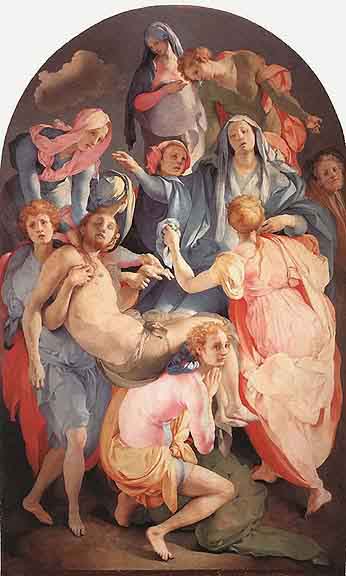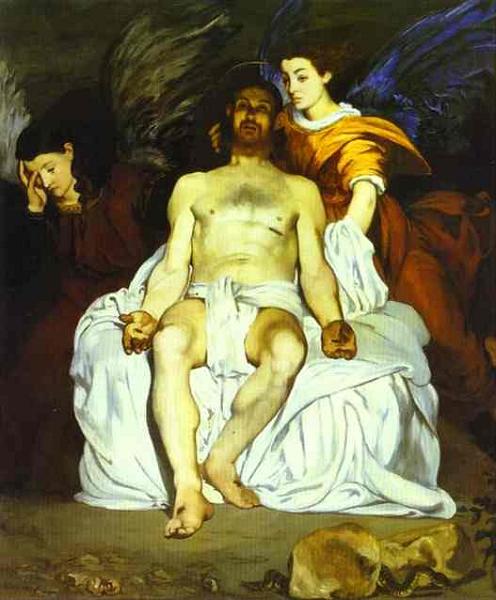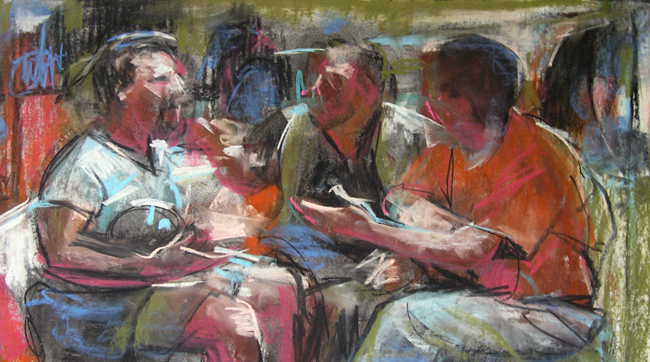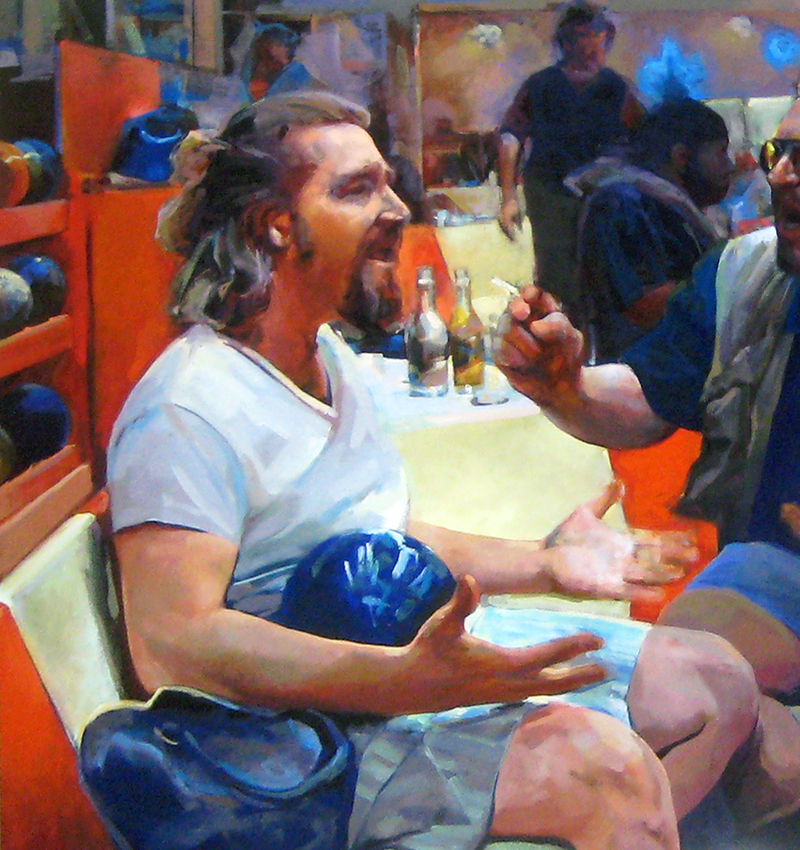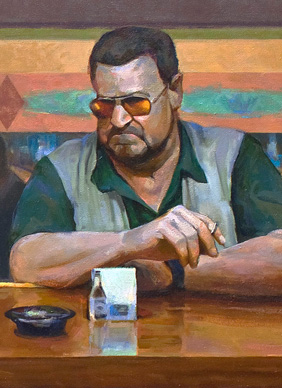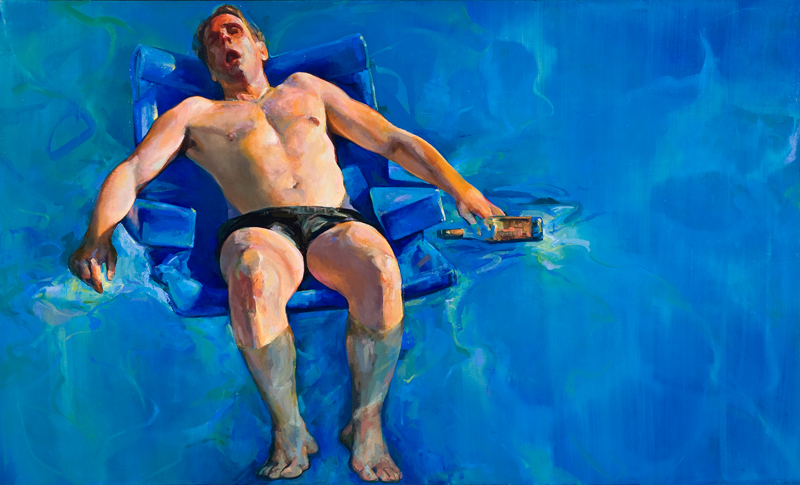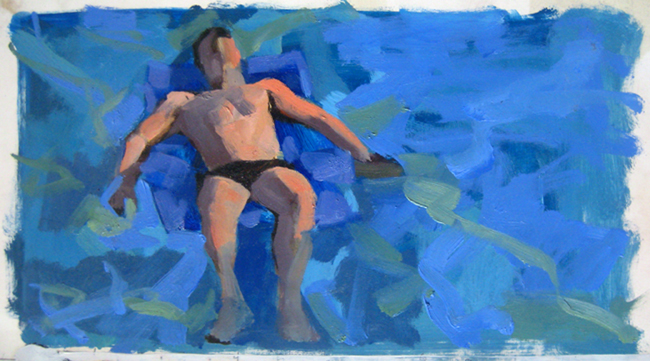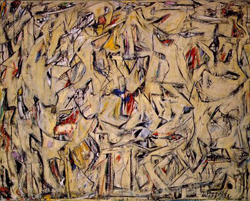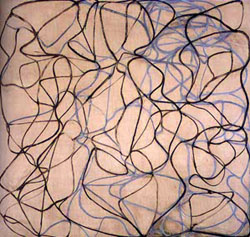Here is a newly completed painting from the Lebowski Cycle. This one is loosely based on The Deposition From the Cross by Jacopo Pontormo. It is actually based as much on the tradition of paintings that depict the Descent from the Cross, of which there are many versions.
Tag Archives: figurative painting
The Lebowski Cycle – The Oath of the Horatii
David’s Oath of the Horatii was the painting that initially inspired the Lebowski Cycle, for reasons I explained in my first post on the series. It was also the first one I started painting after I planned the series and stretched all the canvases, so it has undergone a lot of changes in the four years it’s been on and off the easel.
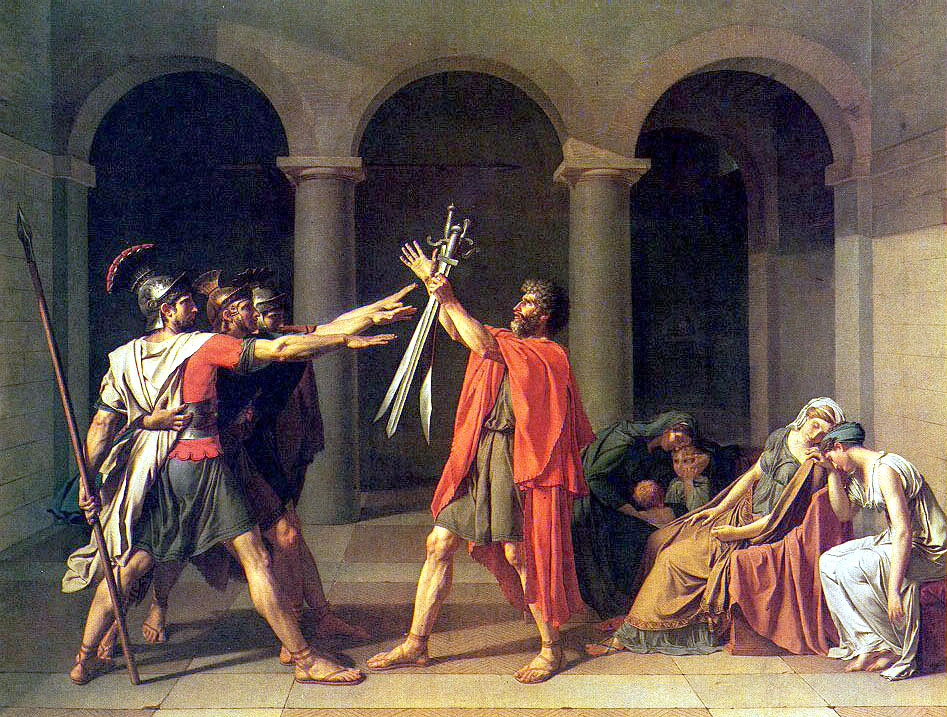
Oath of the Horatii Jacques-Louis David 1784 Oil on canvas 326 cm × 420 cm (128" × 165") Louvre, Paris
I’ll post more about the process soon, but wanted to get this up on the blog.
Below is an early sketch playing with the rhythms of the compostion, and the overall palette of the painting.
Congratulations to Jeff Bridges
It was great to see Jeff Bridges win the Best Actor Oscar last night for his performance in Crazy Heart, 38 years after his first nomination. I’ve always enjoyed his performances, but my appreciation for his acting has certainly grown since watching The Big Lebowski innumerable times while working on The Lebowski Cycle.
The image above is a detail from The Oath of the Horatii, based on the Jacques-Louis David painting of the same name. The full painting is almost complete and I’ll be posting it soon.
The Lebowski Cycle – The Supper at Emmaus
This painting is based on Caravaggio’s Supper at Emmaus from 1601, which illustrates a dramatic moment from the story of Jesus’ resurrection. I was interested in Caravaggio’s take on the story because of his depiction of the moment of discovery, when the disciple’s “eyes were opened”, and for his symbolic use of the still life to reinforce the central idea of his painting.
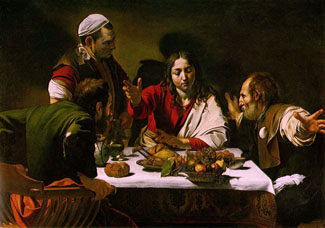
Supper at Emmaus Caravaggio 1601 Oil on canvas 141 cm × 196.2 cm (55.5 in x 77.25 in) National Gallery, London
The symbolic references used in the paintings of this time period are somewhat obscure to us now, it is still clear from looking at the work that each figure, element, and gesture was an important consideration in the presentation of the story, all subsumed into the final image. One of the qualities that I most enjoy about narrative painting is that there is a clear story to be presented, but the specific events of the narrative give you great latitude for formal, conceptual or expressive shifts and digressions that can set a different tone or shift the story’s implications.
In my painting, I was looking to create a kind of visual and narrative tension between the figures, the dramatic space, and the still life, one that is suggestive of a larger narrative, and that hopefully moves beyond the specifics of the Jesus story, the Lebowski story, or the Caravaggio story, but retains a shifting, if uneasy relationship between all three, in addition to where I am trying to go with the content and the formal elements.
I hesitate to be any more forthcoming about my intentions for these paintings, in that I don’t want to set a specific read for anyone else. Painting is, after all, a language of its own and in this regard, I will let the paintings speak for themselves.
This painting was one of the most complex of The Lebowski Cycle. Its scale was daunting (96″ x 38″ / 243.84 cm x 96.52 cm), with 3 main figures that are slightly over life-size, and a deep space that I wanted to paint in a specific way. I wanted the background to be largely empty, but not in the way that Caravaggio’s paintings are empty, through the use of chiaroscuro (the contrasting effects of intense light and deep shadow). I was looking to represent space and to convey a sense of light and shadow through the relationships of large color shapes, rather than using a more dramatic recession into shadow.
This painting will be included in the Laguna Art Museum‘s exhibition The OsCene 2010 – Contemporary Art and Culture in Orange County from February 21st – May 16, 2010.
The Lebowski Cycle – Process: The Death of Marat
I tried to come at this painting from many different directions. I had been thinking about the tension between figuration and abstraction in painting method and painting movements, particularly the many different directions in painting since the Neoclassical period, when David was working.
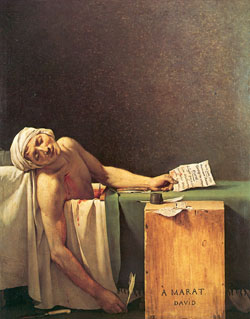
Death of Marat Jacques-Louis David 1793 Oil on canvas 162 cm × 128 cm (64 in × 50 in) Royal Museums of Fine Arts of Belgium, Brussels
David used his paintings to extol the virtue’s of the state. The Death of Marat was essentially a political document from the French revolution. “David was active in numerous agencies of the reign of terror, and historians have identified more than 300 victims for whom David signed execution orders” (source). The idea of a contemporary artist signing execution orders for the state fortunately seems quite odd and extremely unlikely.
Abstract and minimalist works are a departure from the depiction of reality by way of representational imagery and are often considered apolitical.
I was thinking very much about the collision of those styles and ideologies as I painted this, and was drawn to de Kooning’s Excavation and the work of Brice Marden.
A recurring joke in The Big Lebowski is that Uli (the man floating in the pool) is a nihilist. -”He doesn’t care about anything”.
“That must be exhausting,” Lebowski replies.


